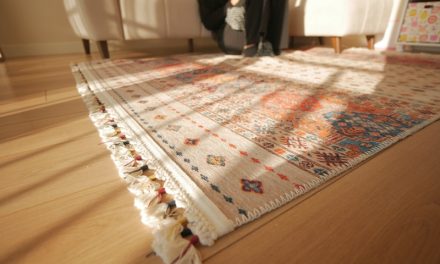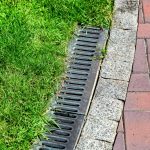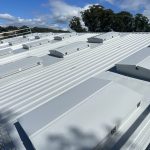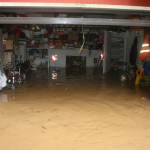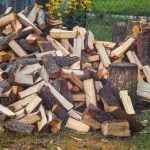8 Things To Do Before Moving Into A New House

Moving into a new house is one of those life milestones that’s equal parts exciting and overwhelming.
You’re picturing where the couch will go, how the backyard will look on a summer afternoon, and maybe even planning the first barbecue.
But before you unpack a single box, there’s a checklist of practical things you’ll want to get sorted.
Skipping these steps can turn the first few weeks into a headache, while ticking them off early will make your new place feel like home much faster. Think of it as setting the foundations, not just for the building, but for your peace of mind.
1. Sort utilities and internet before the keys change hands
Nothing makes the first night rough like no power, hot water or Wi-Fi. Book electricity, gas, water, and internet to start the day you move in (and end them at your old place the day after you leave, just in case). The earlier you line this up, the better your install dates and plan options. Moving guides from realestate.com.au put utilities at the very top of the pre-move list for good reason.
2. Do a thorough cleanout
Even if the place looks “clean,” chances are it’s only had a surface once-over for inspections. Moving in is the perfect time to give everything a thorough clean, especially areas that get hidden quickly, such as inside cupboards, under sinks, window tracks, and ceiling fans.
If you’ve bought a house, this is also a good chance to clear out any junk or odds and ends left behind by the previous owner. In Australia, where summer dust storms and coastal humidity can settle into every crevice, starting fresh means you won’t be cleaning around furniture for months to come.
Along with booking your moving company, it’s also well worth booking a rubbish removal company to come on the same day and help you to get rid of any clutter and leftover junk from the previous inhabitants before you move in.
3. Change locks and check safety basics on day one
Even if you trust the seller or previous tenant, you can’t know who still has keys. Get a locksmith to rekey external doors and check window locks. Then do a quick safety audit: locate the mains power switchboard, water meter/isolation valve, and gas shutoff; test the garage door’s manual release; and check every smoke alarm has power and sounds correctly. Doing this early can help to prevent common home emergencies and ensure that you’re ready if anything should go wrong.
In NSW and nationally, homes must have working smoke alarms that meet Australian Standard AS 3786 (and in many cases be interconnected). If anything looks old or silent, replace them immediately.
4. Arrange mail redirection and update your address systematically
Set up Australia Post mail redirection so important letters follow you, then work through a tidy list: ATO, Medicare, private health, banks, insurer, employer, super, rego/licence (state road authority), schools, subscriptions, and online shopping defaults. myGov also reminds movers that AusPost can redirect mail and, if you choose, notify some organisations for you, which helps reduce misses.
5. Protect your stuff (and your risk) with the right insurance
Before the truck arrives, make sure your contents (and building, if you own the property) are covered at the new address from move-in day.
If you’re between homes, ask your insurer about cover in transit and while goods are in storage. Independent CHOICE guidance is clear: compare policies for events covered, defined limits, and claims satisfaction, not just headline price, so you’re not left exposed if something goes wrong mid-move.
6. Address issues like mould early on
Mould is more than just a cosmetic issue, it’s a health hazard, and Australian homes (especially in humid coastal areas or older weatherboard houses) are prone to it.
Before you start moving furniture in, do a careful check of bathrooms, laundries, wardrobes, and anywhere ventilation is poor. If you spot mould, treat it properly with a mould removal and remediation company who can eradicate the issue at the source before it spreads or causes serious long-term damage.
Don’t just paint over it; without tackling the cause, like poor ventilation, roof leaks, or rising damp, it’ll be back in no time. Sorting this out before you move in not only protects your family’s health but also prevents mould from spreading to your belongings, like clothes, books, and soft furnishings.
7. Do a pre-move clean, minor fixes and a pest sweep while the place is empty
Empty rooms make life easier. Knock over a proper clean (or get a cleaner in), steam-clean carpets, and run a pest treatment if needed.
Patch obvious wall holes, replace tired doorstops and rattly latches, and swap dodgy light globes. If the fridge cavity or laundry taps need adapters, you’ll find out now, not at 10pm on move day. This “blank slate” also helps you spot leaks, damp, or ventilation issues before furniture hides them.
8. Document the condition: photos, meters, and important numbers
Whether you’re renting or you’ve bought, take timestamped photos of every room, close-ups of wear and tear, appliances, and any cracks. Record electricity, gas, and water meter readings as you arrive. In NSW rentals, a written Condition Report is required at the start of a tenancy, completing it carefully (with photos) protects your bond and avoids disputes at the end. Keep copies in cloud storage so they’re easy to share if ever needed.


